Strategic Approach to VM Platform Modernization
In enterprise digital business transformation, inaction guarantees obsolescence. A successful VM platform modernization requires a strategic approach that aligns technology upgrades with business goals. Businesses can harness modern cloud-native architectures while focusing on efficiency, scalability, and cost optimization to ensure a seamless transition from legacy environments. Long-term value depends on thoroughly assessing current platforms, creating clear modernization goals and choosing the right technologies.

Effective Strategies for Modernizing Your VM Platform
Effective modernization of enterprise VM platforms requires infrastructure optimization, hybrid cloud integration and process re-engineering. Key strategies use container technologies such as Kubernetes and OpenShift to make systems more flexible and scalable, guaranteeing efficient operational continuity through phased deployments and robust migration tools.
Hybrid cloud migration combines the benefits of on-premises and public cloud environments, letting businesses upgrade some existing on-premises virtual machines and use the scalability of public clouds. Kubernetes assists many companies in creating a single, unified environment that improves performance, lowers functional costs, and eases the smooth movement of many workloads between their internal systems and multiple cloud platforms.
Assessing Your Current Infrastructure State
Before embarking on any modernization effort, it's crucial to understand your existing infrastructure. This includes:
- Cataloging your applications and their dependencies
- Identifying performance bottlenecks and scalability issues
- Evaluating current operational costs and inefficiencies
This assessment provides the foundation for your modernization roadmap.
Defining Your Modernization Goals
Modernization includes new technologies and aims to achive specific business outcomes. Your goals might include:
- Improving application performance and user experience
- Enhancing scalability to support business growth
- Lowering operational costs and reducing technical debt
- Accelerating time-to-market to introduce new features and services
Building a Phased Approach
Modernization doesn't have to be an all-or-nothing proposition. A phased approach lets you:
- Begin with low-risk, high-impact projects to demonstrate value
- Gradually build expertise in new technologies like Kubernetes and OpenShift
- Refine your processes and tools as you scale your modernization efforts

Leveraging Cloud Platforms for VM Modernization
As mentioned, public cloud platforms like AWS, Azure, and Google Cloud are key in VM modernization. Each offers unique tools and services to optimize and manage VM workloads:
- AWS: EC2 and Elastic Kubernetes Service (EKS) for seamless migration and resource management
- Microsoft Azure: Azure VMware Solution (AVS), simplifying the migration of on-prem VMs to the cloud
- Google Cloud: Anthos for hybrid environment management, which extends Kubernetes across hybrid environments
Selecting the optimal cloud provider—or even a multi-cloud approach—depends on your compliance, performance, and cost optimization needs.
Addressing the People and Process
Technology transformation goes hand-in-hand with organizational change. Consider:
- Upskilling your team on new technologies and methodologies
- Realigning roles and responsibilities to support a more agile IT environment
- Promoting and enableing a culture of continuous learning and innovation
If you decide to consider the strategic advantages of outsourcing instead, here are some:
- Access specialized skills without the long-term hiring commitment
- Faster implementation of new technologies and methodologies
- Flexibility to scale resources up or down based on project needs
- Exposure to cross-industry insights and best practices
Partnering with experts can accelerate your modernization journey while focusing internal resources on core business initiatives. With GBfoods, we implemented technological changes and helped foster a culture of continuous learning and innovation within their IT teams.
Measuring Success and Iterating
As you progress in your modernization journey, it's essential to:
- Define and track key performance indicators (KPIs) aligned with your goals
- Regularly assess the impact of your modernization efforts on business outcomes
- Be prepared to adjust your strategy based on lessons learned and changing business needs
Modernization is an ongoing process, not a one-time project. Our ongoing work with the Government of Catalonia involves regular assessments of modernization efforts, allowing us to adjust strategies to accommodate changing needs and technology.
Embracing AI and Automation in VM Modernization

Emerging technologies can further enhance your IT operations as you modernize your VM platform. Thanks to advanced AI tools and automation, hybrid cloud management is changing.
Working with a major European bank and high-profile clients like Barcelona City Council's SmartCity initiative has clearly shown how much artificial intelligence can transform infrastructure modernization. Here are some key areas where AI and automation are making a significant impact:
- Smart Process Automation: Use AI to automate operational processes, development lifecycle analytics, and CI/CD pipelines. This includes optimizing build processes, automating code reviews, and intelligently managing deployments.
- Proactive Monitoring and Incident Prevention: Utilize AI for early incident detection, anomaly identification, and predictive analytics. This includes Application Performance Monitoring (APM) to anticipate future needs and potential bottlenecks.
- AI-Driven Testing and Quality Assurance: Employ AI-powered testing tools to generate test cases, identify high-risk areas, and autonomously execute comprehensive test suites. This will significantly improve code quality and accelerate release cycles.
- Advanced Hybrid Cloud Management: Use AI to manage application lifecycles across on-premises and cloud environments, ensuring consistency and efficiency. Cloud-based AI continuously optimizes resource allocation and cost efficiency through dynamic performance tuning.
Modernizing the VM platform using a calculated, phased approach and several AI-powered tools builds a strong, flexible infrastructure capable of adapting to rapidly changing business needs. Our deep understanding of the complexities involved in VM platform modernization allows us to guide organizations through every step of their modernization journey, ensuring tangible business benefits and long-term success.
Are you ready to chart your course toward a modernized VM platform?





